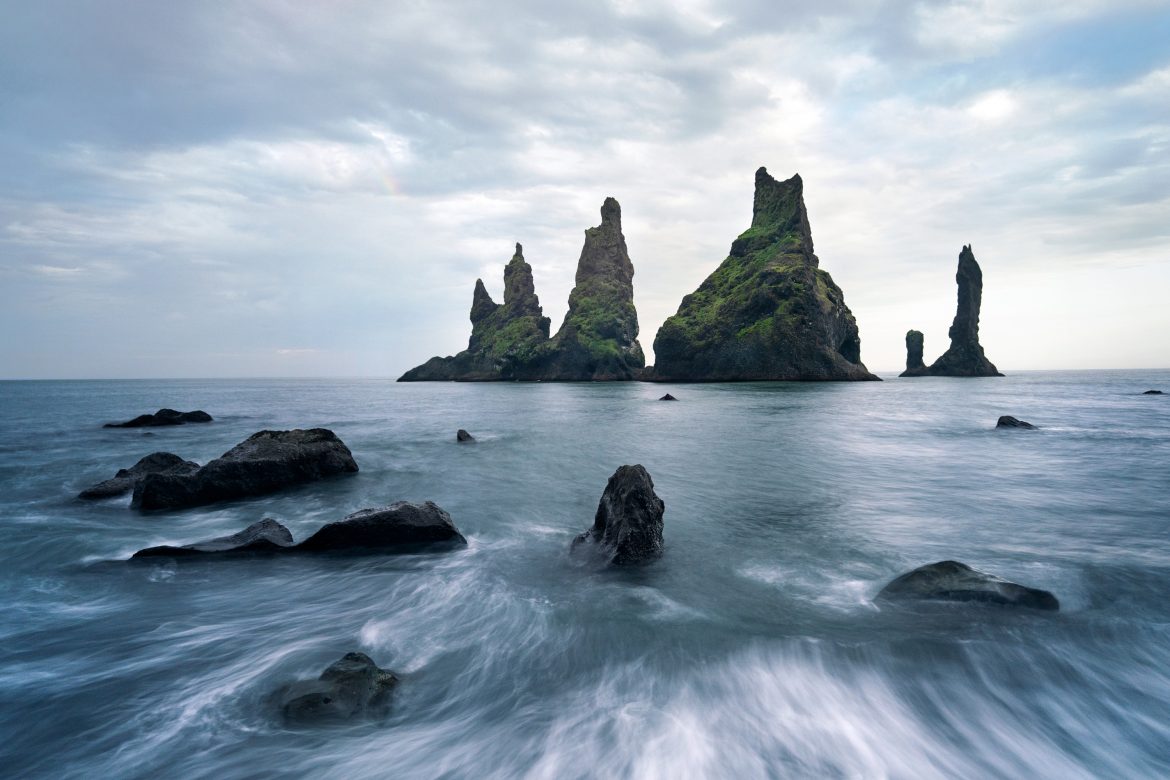In August 2021, I was privileged to embark on a road-trip through Iceland for 26 days. During this time, I visited some of the most breathtaking locations that the country has to offer along the east, west and south coast. Traveling to Iceland also unveiled some of the numerous ways that Iceland celebrates its nature and environment – from stories about Elves, greenhouses and renewable energy sources, to maintaining natural sights and keeping them accessible to tourists.
On the other hand, throughout my trip, I also witnessed some scenes that made my stomach turn. Individuals blatantly disregarding Icelandic laws and regulations, the disturbance of wildlife and nature, as well as reckless behaviors at natural sights.
For this reason, this guide serves as a compass for those wishing to visit the country, with some helpful tips on things to do (and not to do) in Iceland.
Short Summary of Photography Regulations in Iceland
Flying your drone in national parks and protected areas (Skaftafell, Thingvellir, Vatnajökull) is strictly forbidden in Iceland. Moreover, droning in areas that are heavily populated by tourists (Reynisdrangar, Diamond Beach, Jökulsárlon, Dyrholaey, Seljalandsfoss, Gulfoss, Skógafoss, Godafoss, etc.) is also restricted.
In order to be able to drone in these areas, a special permit can be requested from Icelandic authorities. Acquiring a permit costs around 200-300 EUR. Svinafellsjökull remains off-bounds for droning throughout the entire year and a permit is only granted under special conditions.
Swimming in Jökulsárlon, climbing on the ice or smashing it is not allowed. Likewise, disturbing Puffin burrows, baiting, calling, or droning around seabirds is not recommended and can greatly threaten them. Take only memories, leave only footprints.

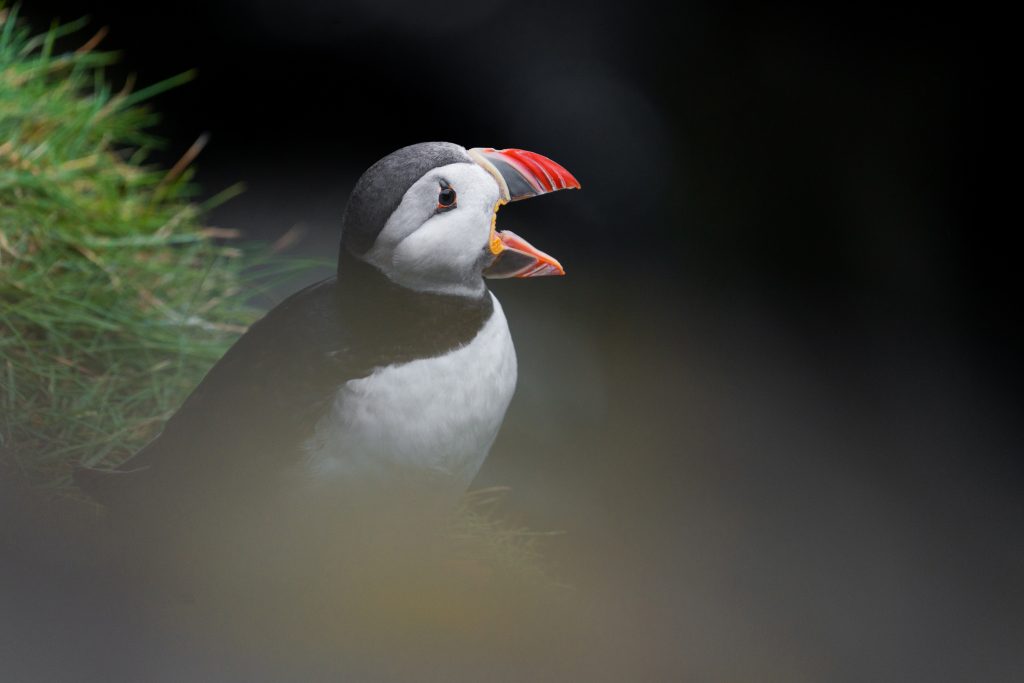
1. Visit Jökulsárlon Glacier Lagoon
Jökulsárlon glacier lagoon is arguably one of the most visited destinations in Iceland. With its towering sheets of ice and crystal-clear, turquoise water, it offers potential for capturing unique landscape photographs with stunning colors. Besides the otherworldly scenery, Jökulsárlon also harbors an incredible history. The icebergs floating in the water are comprised of 1,000-year-old glacial ice that has formerly broken away from the Breiðarmerkurjökull glacier tongue. Home to wildlife, such as seals and seabirds, the chances of encountering various species in the area and in the vicinity of Diamond beach are pretty high.
Please keep in mind: Jökulsárlon glacier lagoon is a drone-free zone. This means that if you would like to fly your drone in the area, you must request a special permit from the national park authorities. Moreover, swimming in the lagoon is a big no-no, as the water and ice are home to many seabirds and marine mammals, as well as keeping the water pristine. As the icebergs are up to 1,000 years old, breaking the ice and throwing rocks at it is also forbidden. Not only will this disturb the wildlife in the area, but also ruin historic landscapes that have taken centuries to build. Lastly, please refrain from going on an “eco-friendly” motor-boat ride at the lagoon. Not only does a Zodiac damage and break icebergs in the area for these large tourism boats to be able to enter the water on wheels, it also creates an immense amount of pollution (the oil from the boat can clearly be seen floating on the water). Instead, choose to go for a truly eco-friendly kayak-ride.
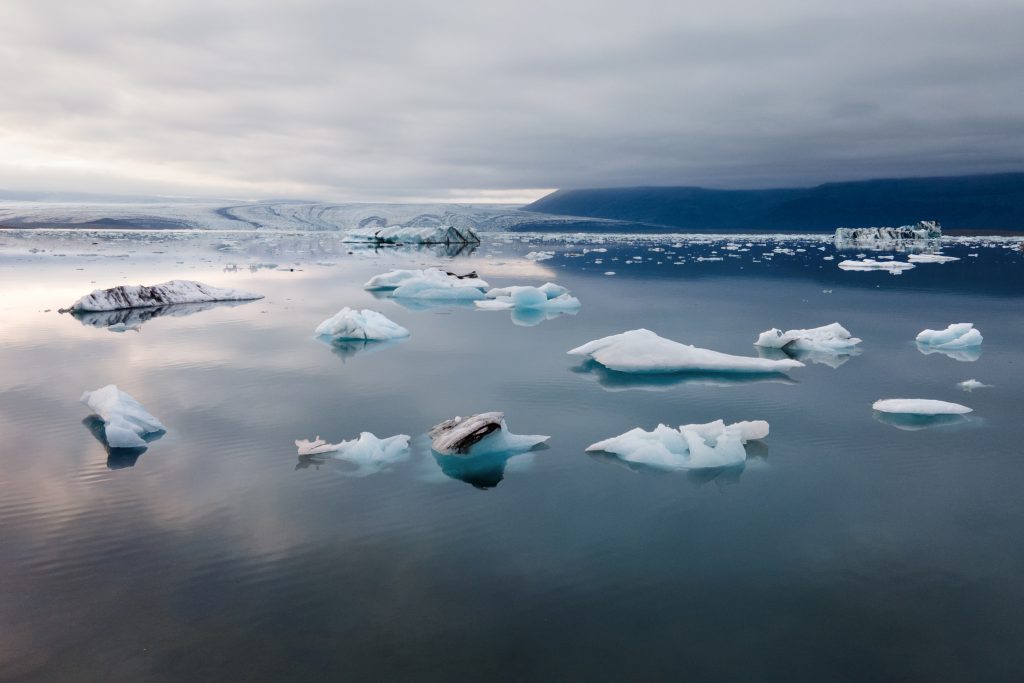
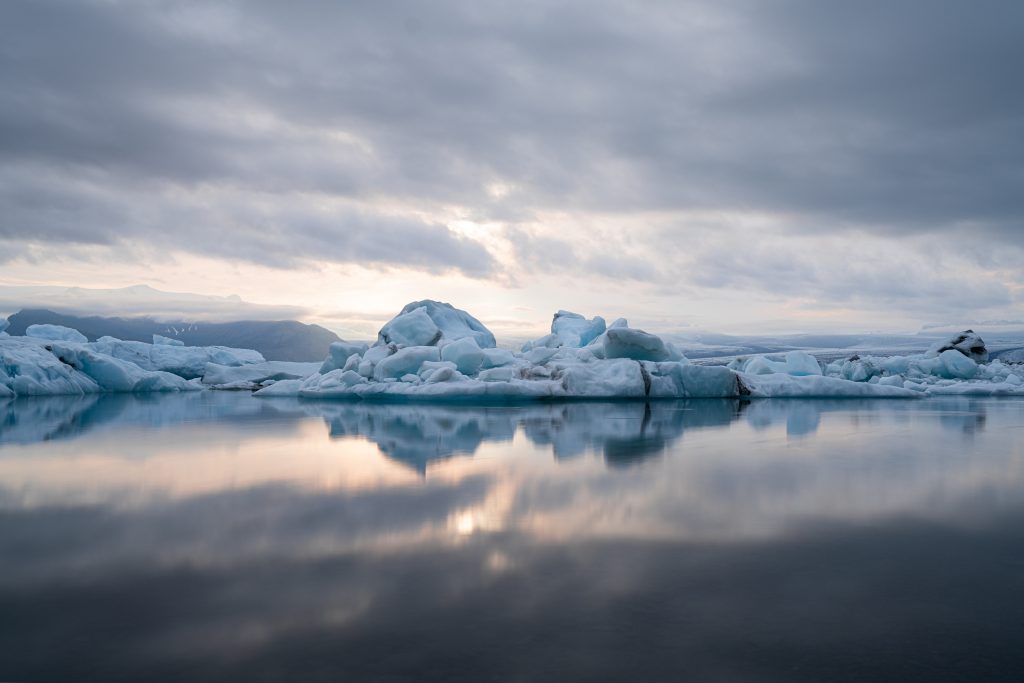
2. See the Puffins
Atlantic puffins are the trademark of Iceland. The small seabirds nest on the steep cliffs of Iceland’s shorelines during the summer, where they mate and raise their young in burrows. During this time, puffins are also endorsed with their beautiful technicolor beaks and matching orange feet. With the stark contrasts in color, they make for a wonderful subject in front of the camera.
While Atlantic puffins can be found around the coastlines of Iceland, the Westfjords and South-East of Iceland offer some great spots to observe the seabirds. The best time to visit the colonies is anywhere between May and August, as the birds spend their time at sea during winter.
Please keep in mind: Puffins – as well as other birds – are very sensitive to noise and distractions. Therefore, it is forbidden to fly your drone in the vicinity of colonies (especially, as birds can get injured in flight). Moreover, interfering with the birds’ natural habitat by getting too close to burrows (or stepping on them), baiting, calling and touching the birds is a big no-no. Most importantly, as Atlantic puffin numbers are declining (by 45% between 2003 and 2017), it still remains questionable to me why some tourists would first seek out puffins to observe them, only to consume a puffin in a restaurant afterwards. In conclusion, don’t be that tourist.
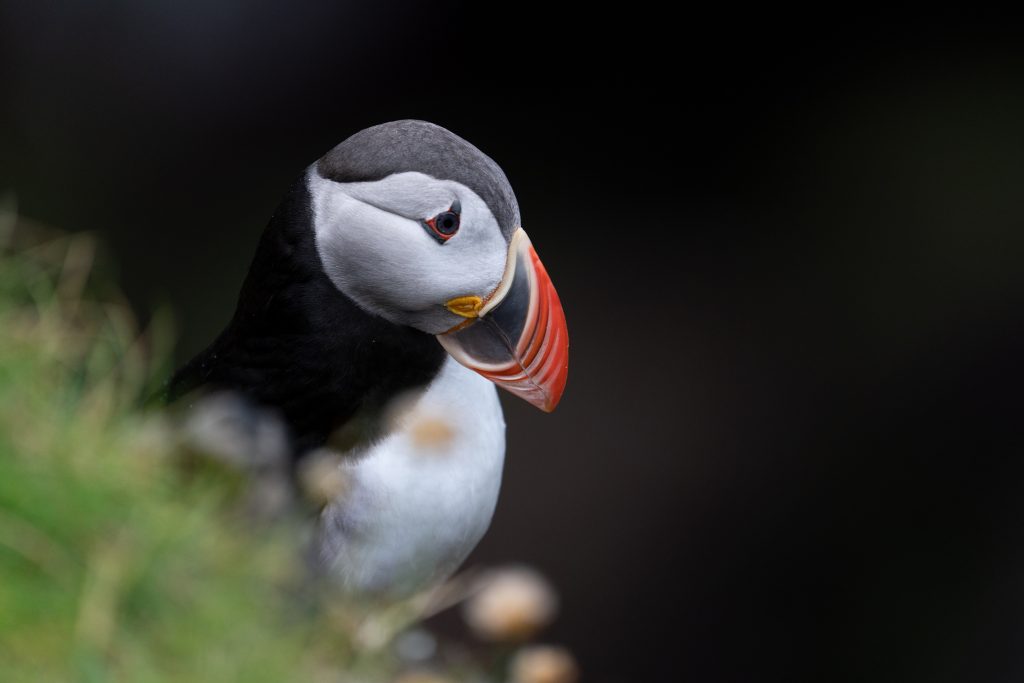
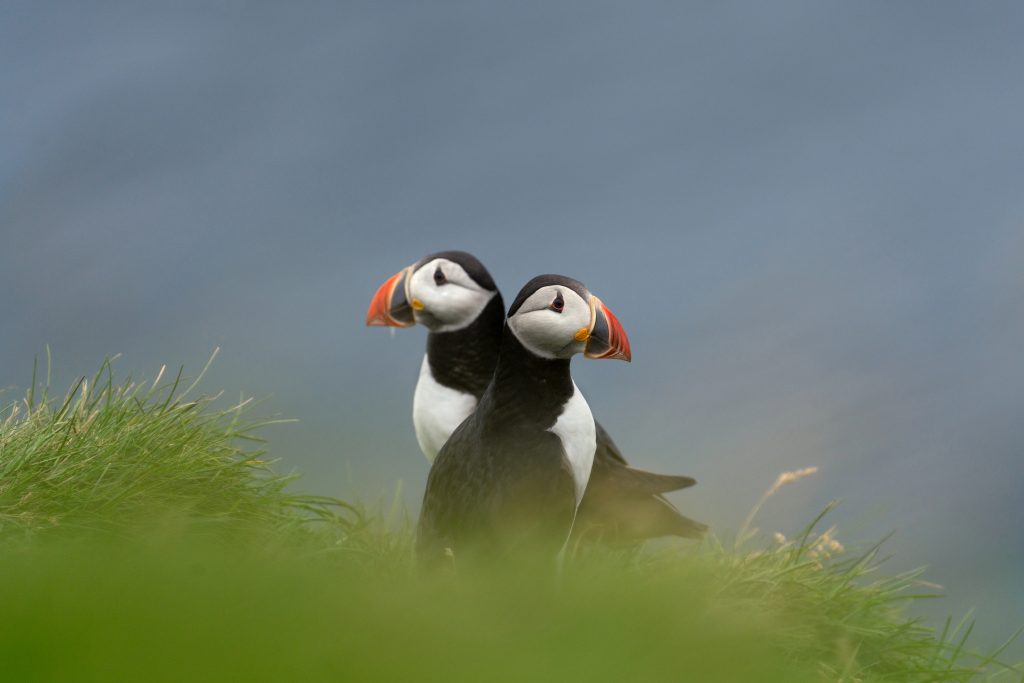
3. Hike to Svartifoss
Svartifoss (translates to “Black Falls”) is a breathtaking 20 Meter (66 Foot) waterfall in South-East Iceland. On the brink of the Skaftafell National Park, it can easily be accessed via an easy, 30-minute hike from the Skaftafell campsite. The black basalt columns surrounding the waterfall are what make it so special. These basalt columns have arisen from the rapid cooling and contraction of lava, which crystalizes into the shape of a column.
Please keep in mind: Parts of Svartifoss are fenced-off for preservation. Hence, walking right up to the waterfall is not possible. The fenced-off area allows for observation of the scenery from close-up, regardless. However, during my time visiting the waterfall, several tourists were climbing over the fenced areas to take photographs directly in front of the waterfall. This is very damaging to the unique flora in the area, as it does not allow it enough time to restore and grow back. In addition, other individuals were throwing their cigarettes on the ground and leaving their trash on site. It is important to remember that visiting and observing these natural phenomena is a privilege for us. Acting recklessly and treating these locations as a dumping ground not only takes away from the experience for conscious visitors, but also threatens the ecosystem. An Instagram photograph is not worth the damage of nature.
Discover also: Exploring Iceland with the Camera
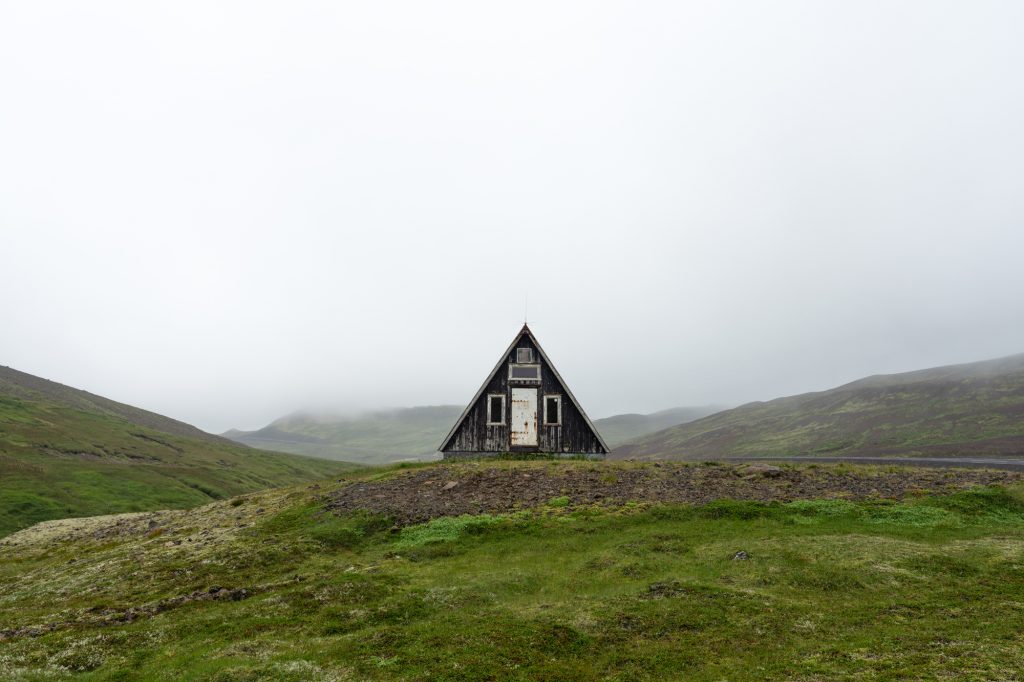
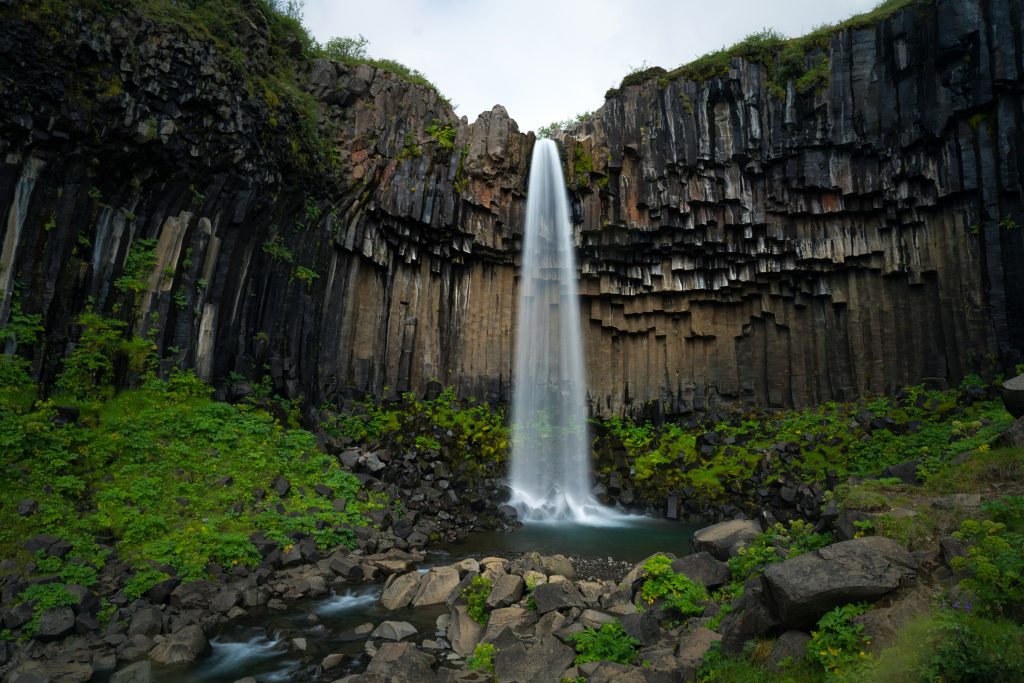
4. Discover Reynisdrangar (Black Sand Beach) and Dyrhólaey
Reynisdrangar (Black Sand Beach) and Dyrhólaey (translates to “the hill island with the door hole”) are some of the most iconic locations in Iceland. Offering spectacular views of the rock formations in the middle of the sea, they are also beautiful locations for landscape photographers, in particular at magic hour. Both locations can easily be accessed by car, with a 20-minute hike up to Dyrhólaey from the parking lot. In particular, Reynisdrangar provides numerous opportunities to discover various perspectives and create long-exposures directly at the beach.
Please keep in mind: Droning around Black Sand Beach and Dyrhólaey is not allowed. Puffin colonies tend to nest around Dyrhólaey in the summer, so any form of noise disturbance can greatly interfere with their breeding, hunting and nesting success. Moreover, swimming in the water and going close to the waves at the shoreline is not recommended. The reason for this is that tides can change extremely quickly in Iceland. Consequently, visitors can get drawn into the water unexpectedly and suffer from hypothermia or even drown. Therefore, caution is advised.
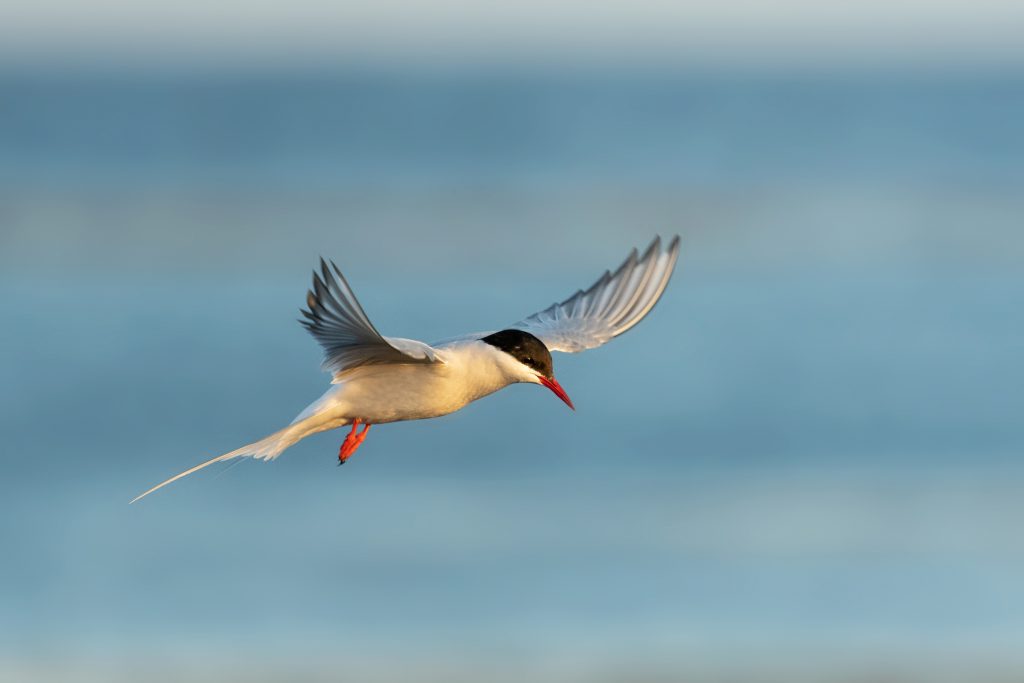
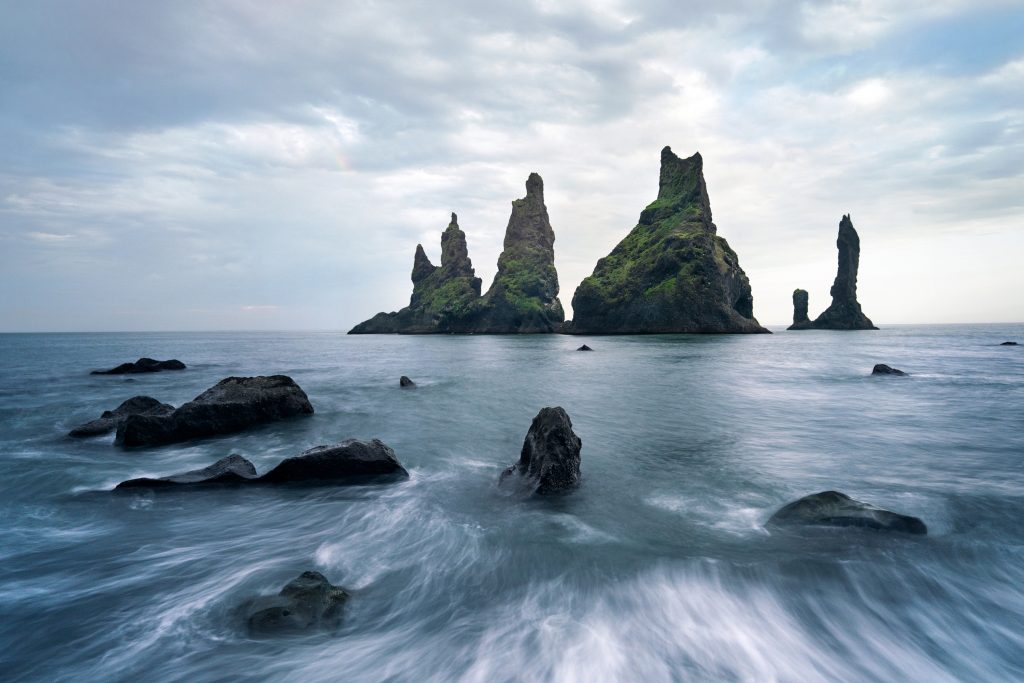
5. Adventure in the Icelandic Highlands
The Icelandic Highlands are one of the top things to do in Iceland. Extending over 40,000 square kilometres, they rank amongst Europe’s largest unpopulated areas. The volcanic landscapes, mountain ranges, rivers and crater lakes are otherworldly and breathtaking. Moreover, the vastness of the landscape allows for endless photography opportunities with a wide range of perspectives and motifs. The Icelandic Highlands can only be visited by car during the summer, as driving on F-Roads in the winter is too dangerous. The best way to discover this region in Iceland is by camping at the Landmannalaugar campsite. From there, numerous hiking routes can be accessed with stunning views from above.
Please keep in mind: Icelandic F-Roads cannot be accessed with a two-wheel drive car. As roads are unpaved and contain many river-crossings, a suitable car for challenging conditions is a must. Gas stations are not accessible everywhere in the highlands. Therefore, please ensure that you have enough gas to last you for at least two days of travel. Moreover, there is no electricity at the campsite, so having fully-charged batteries, extra SD cards and a headlamp is a must. Hiking in the Icelandic Highlands can be a challenge, especially during strong winds. Stable hiking shoes, quality hiking gear and sunscreen are advised. Lastly, please bring a travel buddy with you, in case something happens and you need to call for help.
Read also: National Geographic Newcomers in Landscape Photography
Advance Your Landscape Photography
6. Explore the Glaciers
Of all the things to do in Iceland, exploring the numerous glaciers in this country is one of the highlights. In fact, glaciers cover 11% of Icelandic land surface and Iceland is home to 269 named glaciers, most of which come in various shapes and sizes. The blue color of the glaciers comes from compression of the ice, during which air bubbles are squeezed out and ice crystals enlarge. Moreover, black stripes can be seen in the majority of Icelandic glaciers, stemming from volcanic ash, covered by layers of ice throughout decades of glacial formation. The majority of glaciers are situation in national parks, such as Vatnajökull and Thingvellir. In particular, the Skaftafell National Park area provides numerous opportunities to photograph glaciers from different perspectives.
Please keep in mind: Droning above glaciers situated in national parks is forbidden due to disturbance of local fauna (especially birds). In particular, Svinafellsjökull remains off-bounds and a permit is only granted under special conditions. As glaciers have numerous crevices, walking on glaciers without an experienced guide and appropriate gear is not recommended. Temperatures around glaciers drop (for obvious reasons), so make sure to take warm clothing, gloves and a hat when going to photograph a glacier.
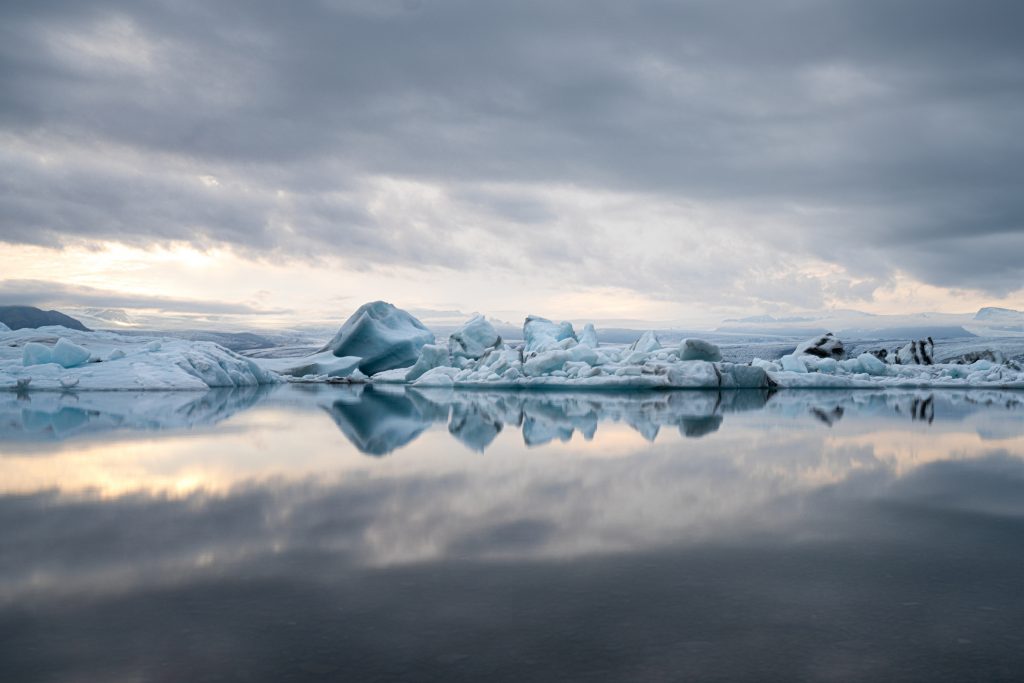
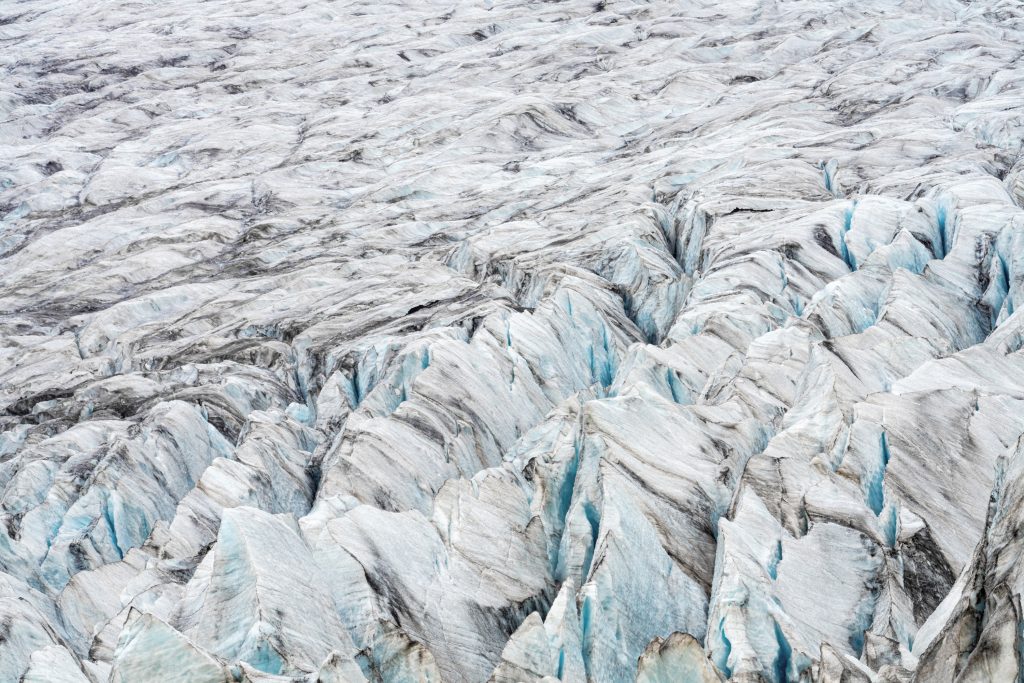
7. Observe Iceland from Above
The patterns, textures and colors of Icelandic landscapes are simply indescribable. Therefore, one of the best things to do in Iceland is to explore it from above. In particular, a flight with a small airplane or helicopter offers the opportunity for unique photographs and access to areas that may otherwise be restricted to you via car. The best places to take aerial photographs are along the coastlines and in the highlands. However, an experienced pilot will already know the best spots to visit during your trip.
Please keep in mind: As per European law, droning above 120 Meters is not permitted in Iceland. In fact, the best views of Icelandic landscapes are only accessible at about 3,000 Meters. For this reason, it is best to consult with a local pilot or helicopter company when looking to do aerial photography, rather than trying to recreate aerial shots with a drone. Please also mind your carbon footprint, and book tours in groups rather than private flights.
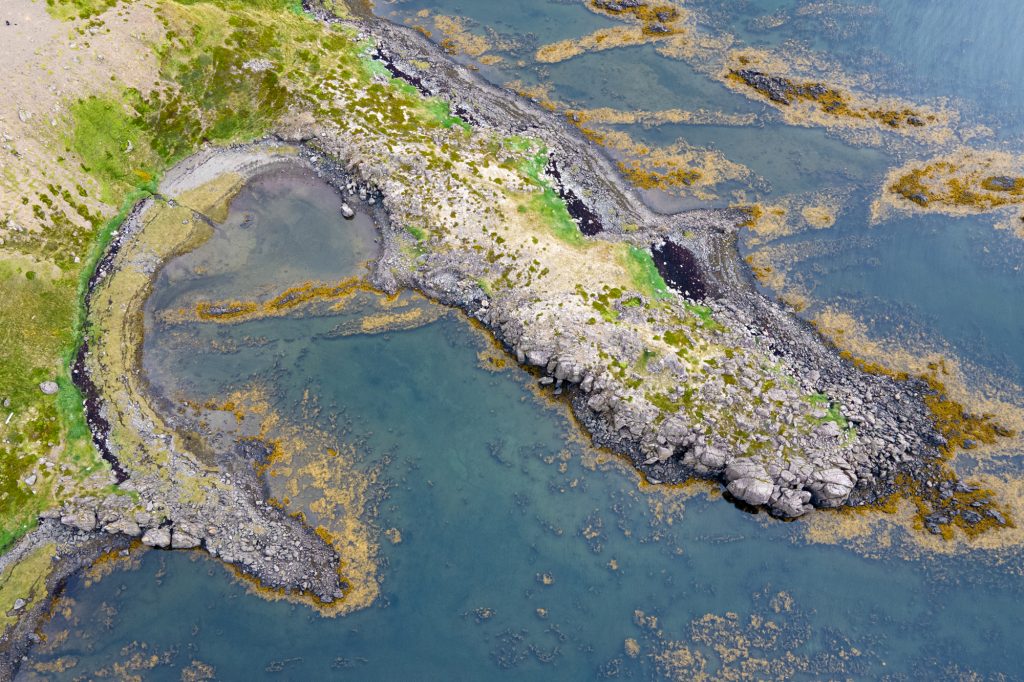
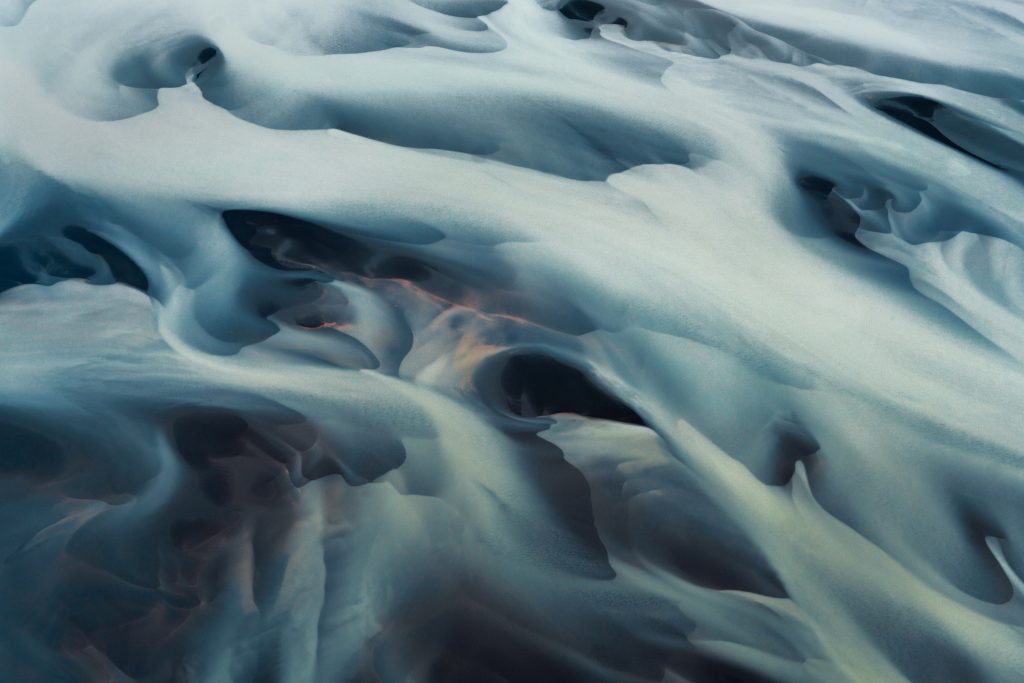
8. Hike to Fagradalsfjall
The last thing to do in Iceland – and one you surely don’t want to miss – is hiking to the most recently erupted volcano, Fagradalsfjall. Fagradalsfjall is a tuya volcano formed in the Last Glacial Period on the Reykjanes Peninsula, around 40 kilometres from Reykjavík, Iceland. The hike to Fagradalsfjall is moderate to difficult, as the mountains are steep at several points. Carrying a 600mm lens, drone and tripod to the volcano was a true challenge. However, having a long lens at the volcano is invaluable, as the magma does not enable close access to the crater anymore.
Please keep in mind: During my time at Fagradalsfjall, I saw some mind-boggling behavior by tourists. From walking on magma, flying a drone directly into the lava-filled crater (one can safely say, that drone did not return) and walking up steep mountains in sneakers, the unpreparedness of tourists for a volcanic experience was obvious. Therefore, please bring sturdy walking shoes, water and warm gear with you when hiking the volcano. Moreover, refrain from walking on magma fields, as there is still lava flowing underneath. Lastly, drones can easily be swayed by the hot air rising from the volcano, as well as the heat of the lava itself. Therefore, please fly cautiously when piloting around the volcano.
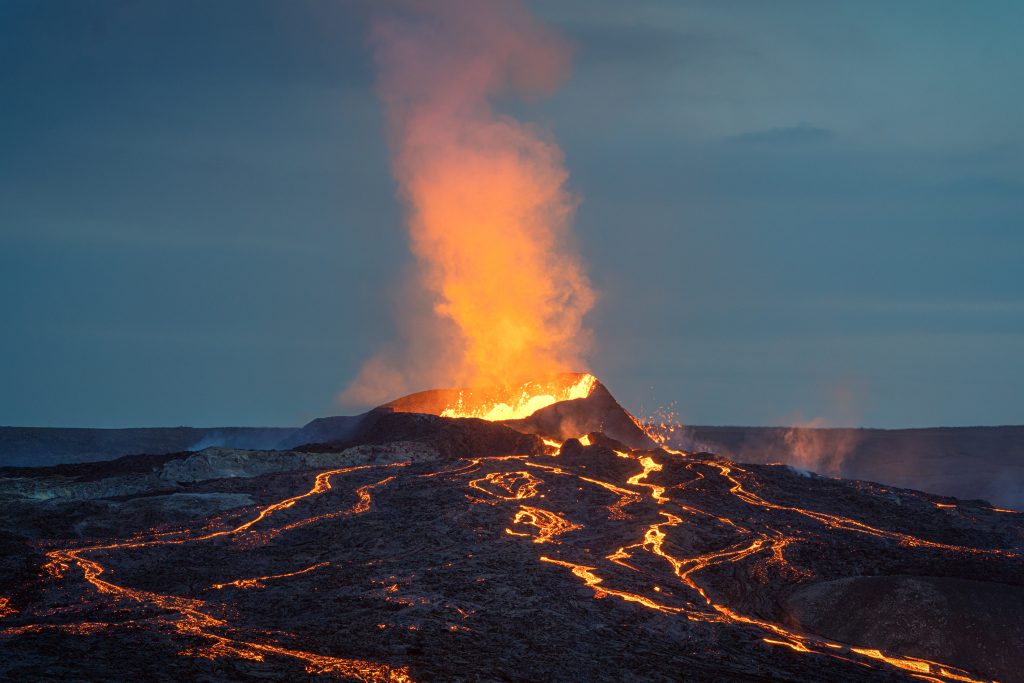
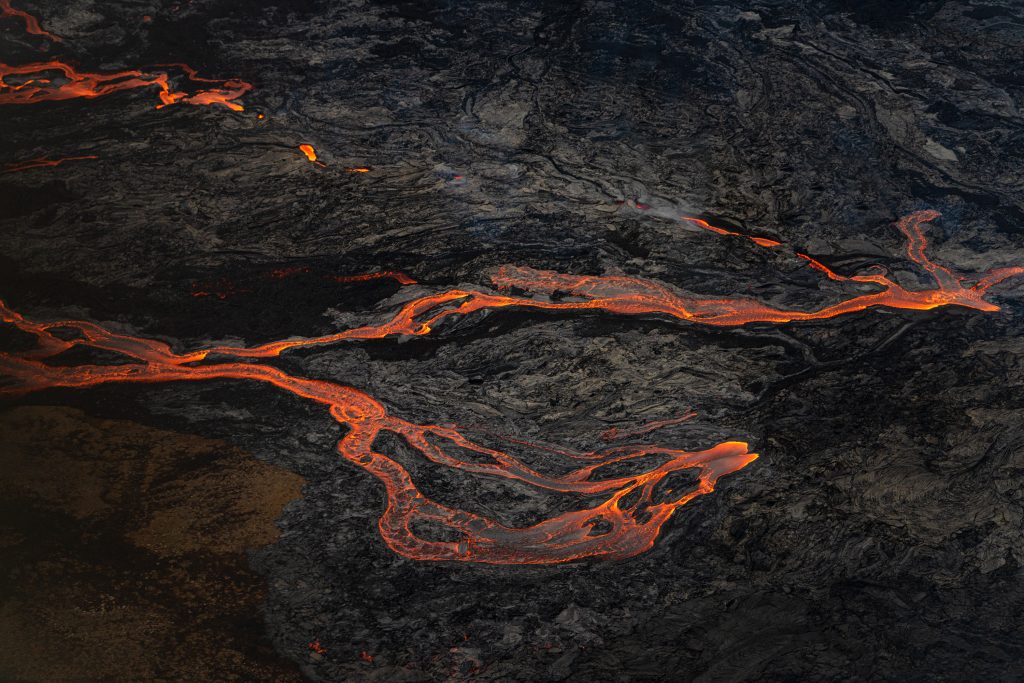
Conclusion
Iceland is an incredibly special destination to explore. However, with rising numbers in tourists, coupled with a social media explosion of posts from the country, the importance of nature first has been pushed aside by some. Following these recommendations will not only help you to experience the best that Iceland has to offer, but will also ensure that Iceland’s natural phenomena are preserved and protected for years to come.
